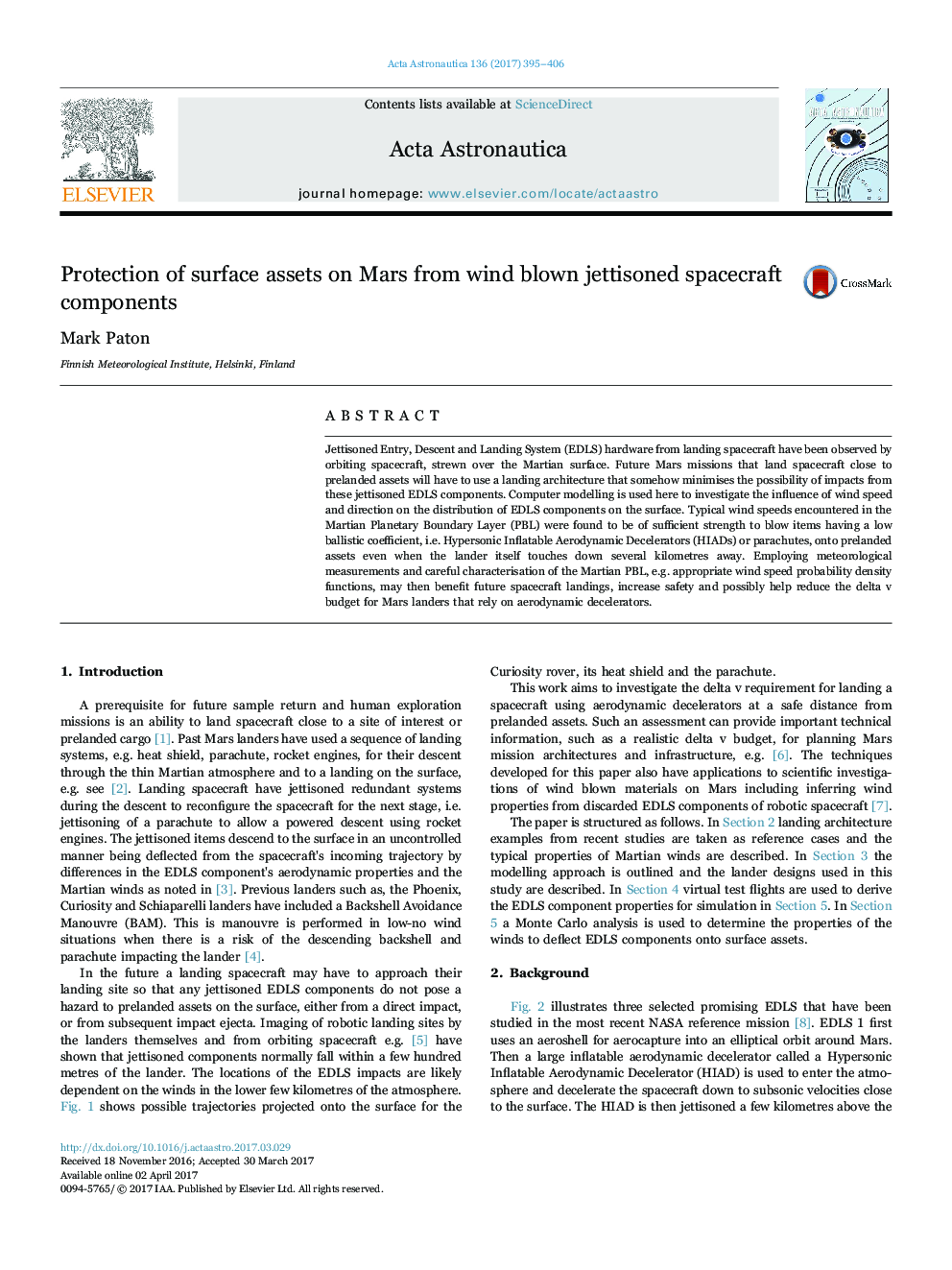| Article ID | Journal | Published Year | Pages | File Type |
|---|---|---|---|---|
| 5472403 | Acta Astronautica | 2017 | 12 Pages |
Abstract
Jettisoned Entry, Descent and Landing System (EDLS) hardware from landing spacecraft have been observed by orbiting spacecraft, strewn over the Martian surface. Future Mars missions that land spacecraft close to prelanded assets will have to use a landing architecture that somehow minimises the possibility of impacts from these jettisoned EDLS components. Computer modelling is used here to investigate the influence of wind speed and direction on the distribution of EDLS components on the surface. Typical wind speeds encountered in the Martian Planetary Boundary Layer (PBL) were found to be of sufficient strength to blow items having a low ballistic coefficient, i.e. Hypersonic Inflatable Aerodynamic Decelerators (HIADs) or parachutes, onto prelanded assets even when the lander itself touches down several kilometres away. Employing meteorological measurements and careful characterisation of the Martian PBL, e.g. appropriate wind speed probability density functions, may then benefit future spacecraft landings, increase safety and possibly help reduce the delta v budget for Mars landers that rely on aerodynamic decelerators.
Related Topics
Physical Sciences and Engineering
Engineering
Aerospace Engineering
Authors
Mark Paton,
